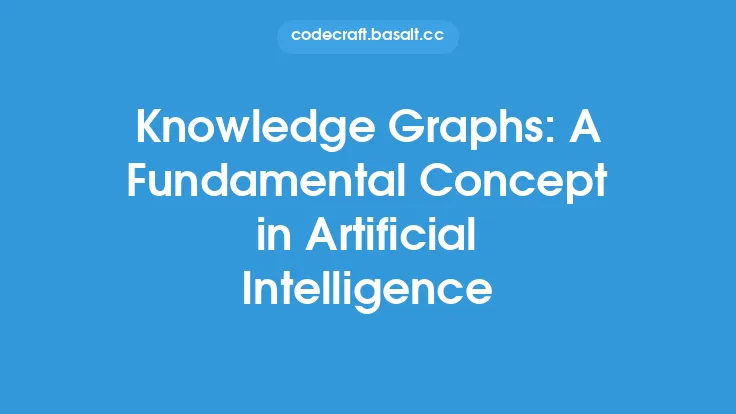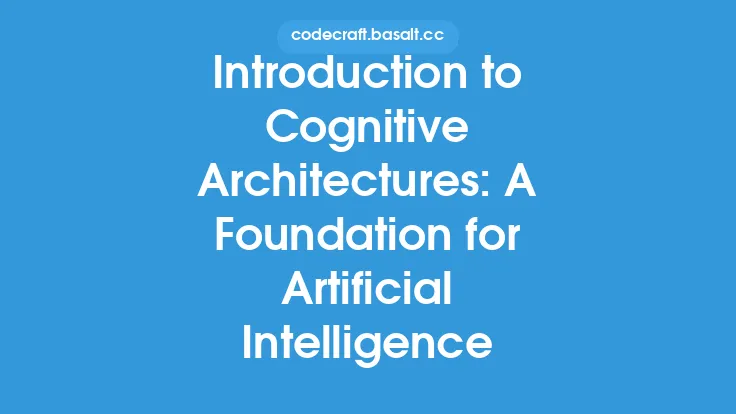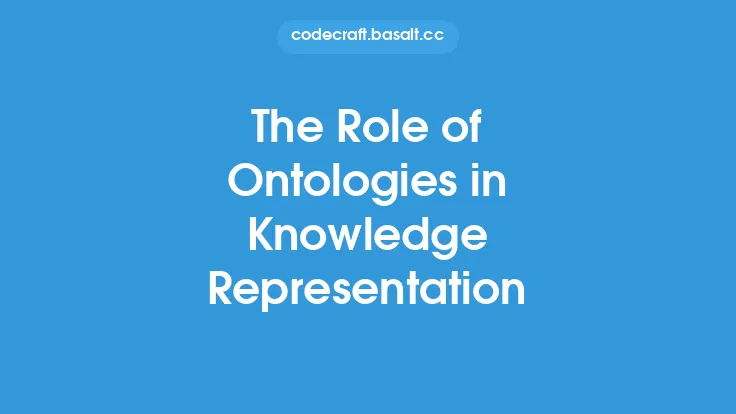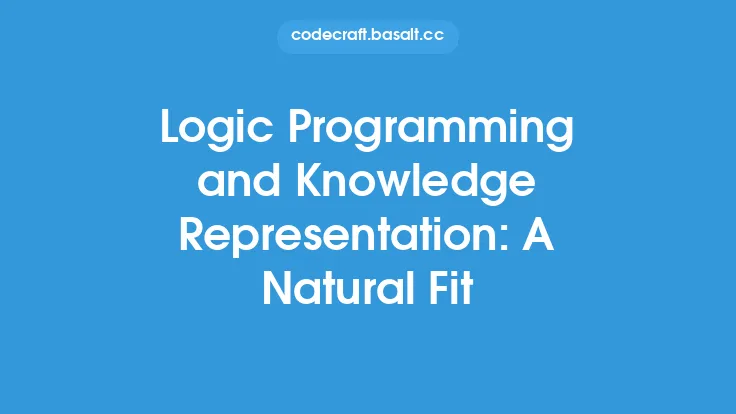Knowledge representation is a fundamental concept in artificial intelligence (AI) that deals with the way information is organized, stored, and retrieved by an intelligent system. It is a crucial aspect of AI research, as it enables machines to understand, reason, and make decisions based on the knowledge they possess. In this article, we will delve into the basics of knowledge representation, its importance, and the various techniques used to represent knowledge in AI systems.
What is Knowledge Representation?
Knowledge representation refers to the process of encoding knowledge in a machine-readable format, allowing AI systems to reason, infer, and make decisions based on that knowledge. It involves the use of various data structures, algorithms, and techniques to organize and store knowledge in a way that is both efficient and effective. The goal of knowledge representation is to provide a framework for AI systems to understand and manipulate knowledge, enabling them to perform tasks such as problem-solving, decision-making, and learning.
Types of Knowledge
There are several types of knowledge that can be represented in AI systems, including:
- Declarative knowledge: This type of knowledge refers to facts, rules, and relationships between entities. It is often represented using formal languages, such as first-order logic or description logics.
- Procedural knowledge: This type of knowledge refers to the steps or procedures required to perform a task. It is often represented using programming languages or scripts.
- Semantic knowledge: This type of knowledge refers to the meaning and context of information. It is often represented using ontologies, taxonomies, or semantic networks.
- Episodic knowledge: This type of knowledge refers to specific events or experiences. It is often represented using narratives or episodic memory structures.
Knowledge Representation Techniques
There are several techniques used to represent knowledge in AI systems, including:
- Propositional logic: This technique uses logical statements to represent knowledge as a set of propositions.
- First-order logic: This technique uses predicate logic to represent knowledge as a set of predicates and arguments.
- Frames and slots: This technique uses a frame-based representation to organize knowledge into a set of frames, each with a set of slots.
- Semantic networks: This technique uses a network-based representation to organize knowledge into a set of nodes and edges.
- Ontologies: This technique uses a formal representation to organize knowledge into a set of concepts, relationships, and rules.
Importance of Knowledge Representation
Knowledge representation is a critical aspect of AI research, as it enables machines to understand and reason about the world. It has numerous applications in areas such as:
- Expert systems: Knowledge representation is used to build expert systems that can reason and make decisions based on domain-specific knowledge.
- Natural language processing: Knowledge representation is used to enable machines to understand and generate human language.
- Computer vision: Knowledge representation is used to enable machines to understand and interpret visual data.
- Robotics: Knowledge representation is used to enable robots to understand and interact with their environment.
Challenges in Knowledge Representation
Despite its importance, knowledge representation is a challenging task, as it requires the development of formal languages, data structures, and algorithms to represent and reason about knowledge. Some of the challenges in knowledge representation include:
- Knowledge acquisition: The process of acquiring knowledge from various sources, such as text, images, and sensors.
- Knowledge integration: The process of integrating knowledge from multiple sources into a single, coherent representation.
- Knowledge reasoning: The process of reasoning about knowledge to draw conclusions, make decisions, and solve problems.
- Knowledge updating: The process of updating knowledge to reflect changes in the world or new information.
Conclusion
In conclusion, knowledge representation is a fundamental concept in artificial intelligence that deals with the way information is organized, stored, and retrieved by an intelligent system. It is a crucial aspect of AI research, as it enables machines to understand, reason, and make decisions based on the knowledge they possess. The various techniques used to represent knowledge in AI systems, including propositional logic, first-order logic, frames and slots, semantic networks, and ontologies, provide a framework for AI systems to understand and manipulate knowledge. Despite the challenges in knowledge representation, it remains a critical aspect of AI research, with numerous applications in areas such as expert systems, natural language processing, computer vision, and robotics.





